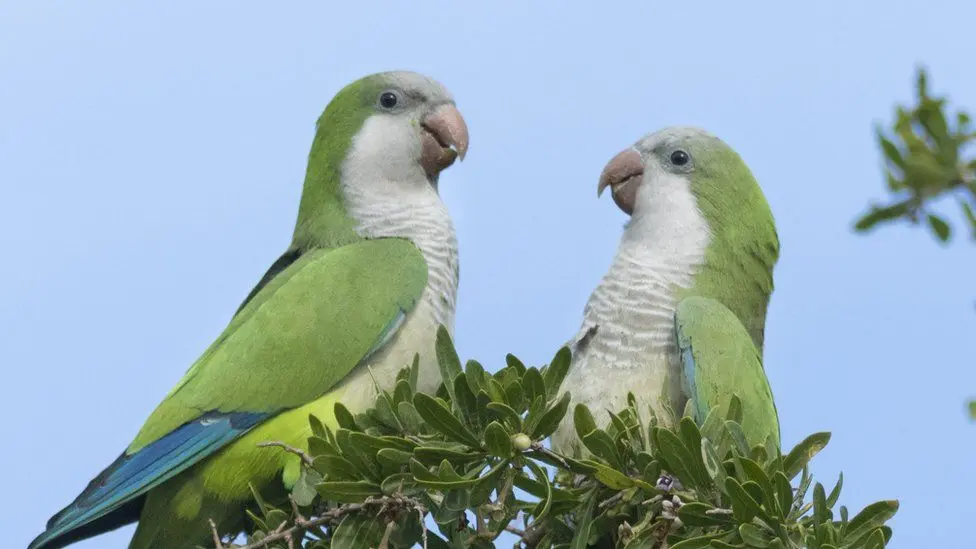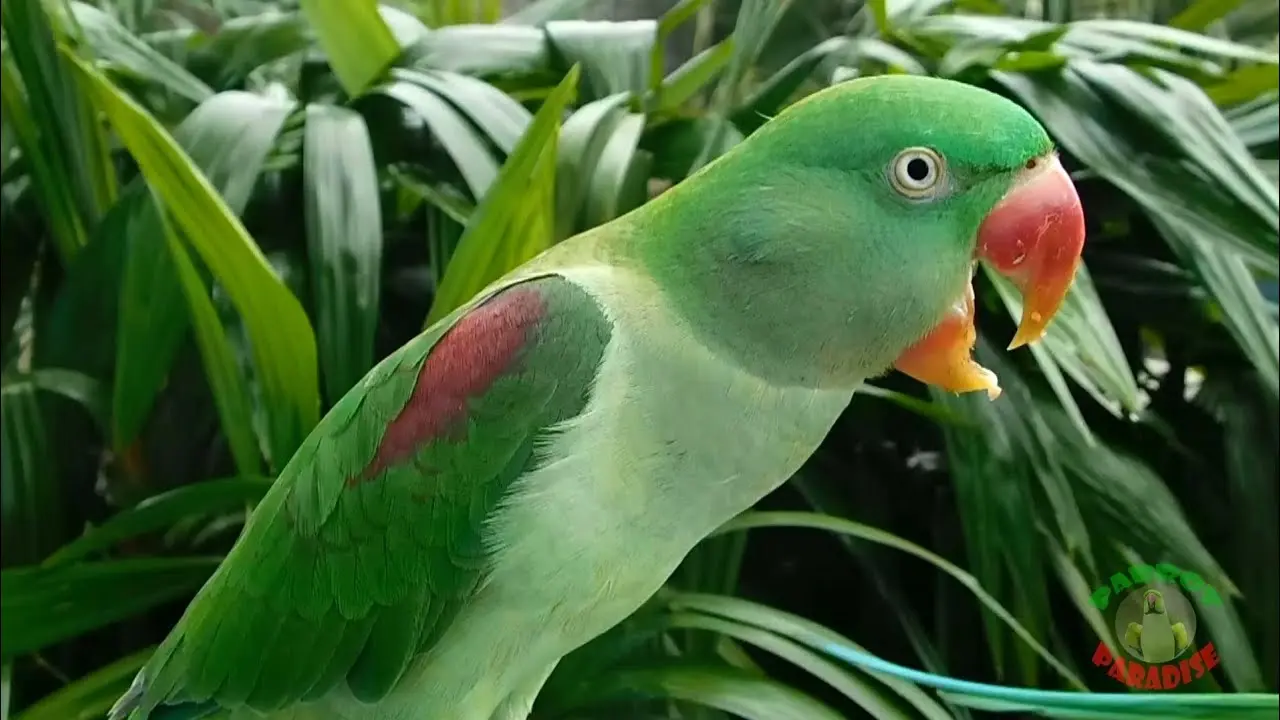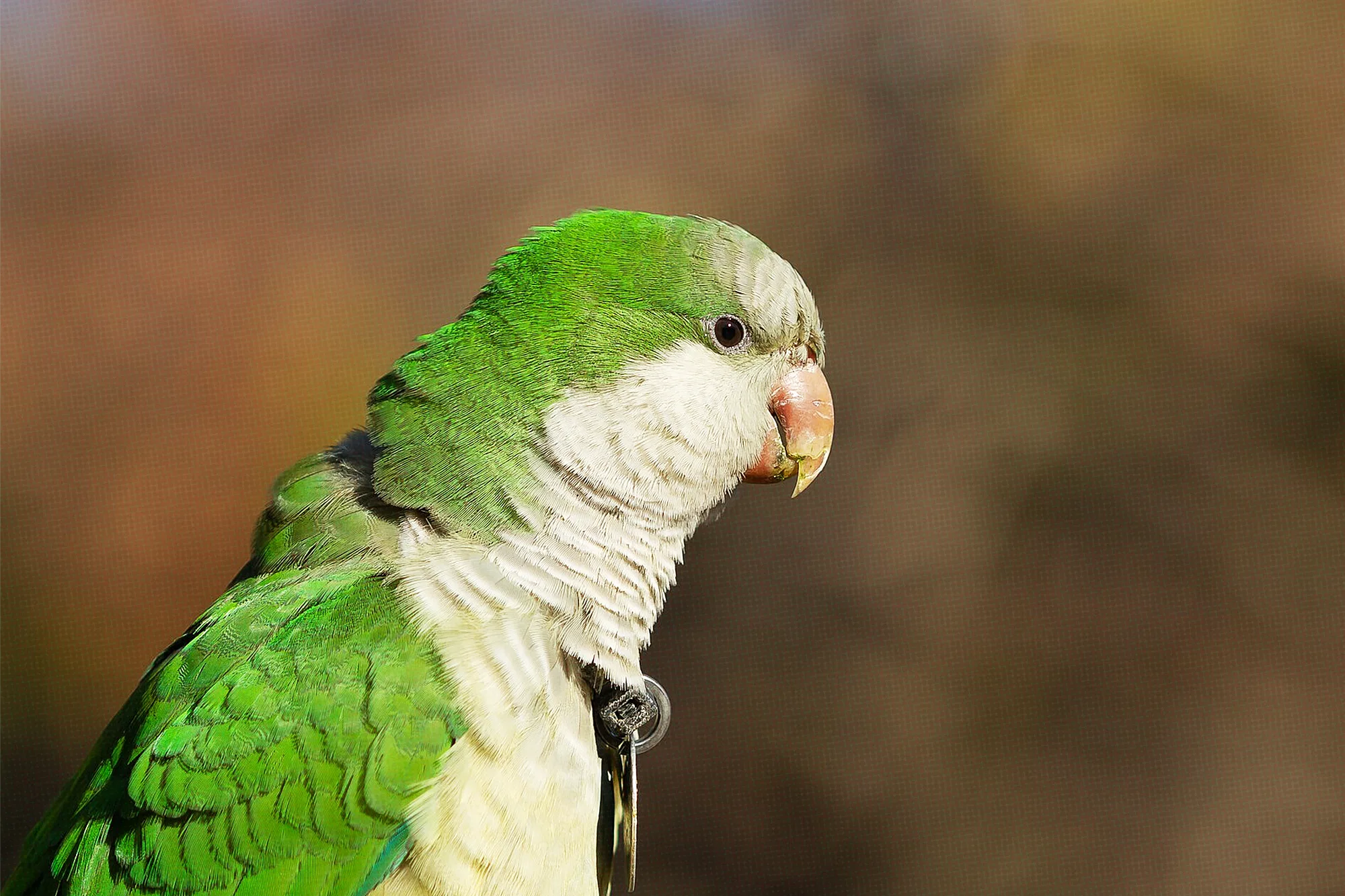The lifespan of a parakeet can significantly depend on several factors but on average, they live between 5 to 15 years in captivity. However, with excellent care and optimal living conditions, some parakeets have been known to exceed this average, living up to 20 years or longer. Understanding these factors that affect a parakeet’s lifespan can help owners provide the best possible care for their birds.
 About This Specie
About This Specie
Family: Psittacidae
Class: Aves
Length: 23 – 25cm (Adult)
Lifespan: Average of 10 years, can live up to 20
Weight: 60g (Adult)
Average Lifespan Of Parakeet Species
There are many species of parakeets, such as Budgerigars (Budgies), Alexandrine parakeets, Indian Ringneck parakeets, and Monk parakeets, each having varying average lifespans. Among these, Budgerigars are the most common pet parakeet and typically live between 5 to 10 years. In contrast, larger parakeets such as the Alexandrine parakeet can live up to 25 years or more in optimal conditions.
Budgerigars

Budgerigars, or Budgies, are one of the most common pet parakeets and they come in an assortment of colors. These lovely birds are native to Australia, and their lifespan in captivity, with optimum care, usually ranges from 10-15 years. On the average however, their average lifespan is generally around 5 to 10 years, considering all factors including diet, environment, and healthcare.
Indian Ringneck Parakeets

Indian Ringneck Parakeets are known for their charming ring-shaped markings and playful personalities. They are native to Africa and South Asia. In terms of lifespan, they are among the long-living species of parakeets. With excellent care, they can live up to 20-30 years in captivity.
Monk Parakeets

Monk Parakeets, also known as Quaker Parakeets, are distinguished by their bright green plumage and a monk-like grey chest and forehead. They originate from the temperate to Subtropical Americas. In captivity, they have a typical lifespan of 15-20 years.
Alexandrine Parakeets

Alexandrine Parakeets, bearing the name of Alexander the Great who admired them, are robust and larger parakeets known for their remarkable plumage and strong beaks. They natively belong to India and Sri Lanka. Given the appropriate care and nutrition, Alexandrine Parakeets can live up to 25-30 years, making them one of the longest living species among the parakeet family.
Factors that affect a parakeet’s lifespan
Many things influence how long your parakeet will live a happy and healthy life. From their diet to their genetics, the following affect to your parakeet’s lifespan:
1. Genetic Factors
Like other animals, the lifespan of a parakeet can be influenced by its genetic constitution. Thus, a parakeet may be genetically predisposed to certain health issues, which can potentially reduce their overall lifespan. For instance, some parakeets may have a genetic predisposition to tumors, which are reasonably common issues in older budgies.
2. Diet
A balanced, nutritious diet significantly contributes to a parakeet’s healthy and long life. A parakeet’s diet should primarily consists of quality bird pellets, supplemented with fresh fruits, vegetables, and limited seeds:
- Pellets: High-quality commercial pellets should form the base of a parakeet’s diet. They are formulated to be nutritionally complete, containing balanced vitamins, minerals, proteins, and carbohydrates that parakeets require.
- Seeds: Though parakeets love eating seeds, they should only be a supplement to their diet. Seeds are rich in fat, and continuous seed-based diets can lead to health complications, such as obesity and fatty liver disease. Introduce a measured daily portion to balance their nutritional intake.
- Fruits and Vegetables: Fresh fruits and vegetables provide much-needed variety, vitamins, and minerals. Dark, leafy greens like kale, spinach, and dandelion leaves are an excellent choice. Fruit, on the other hand, should be offered in moderation due to high sugar content. Blueberries, apples, and strawberries are suitable choices.
- Treats: Occasional treats can add an unexpected element, promoting mental and emotional stimulation. Treats should be given sparingly and include high-quality options such as dehydrated fruits, sugar-free millet sprays, or commercial avian treats.
Feeding Guidelines
The following are feeding guidelines you should follow, to ensure your parakeet’s well-being:
- Food Rotation and Portion Sizes: Rotate the foods you provide every few days to maintain variety and prevent them from getting bored. Be mindful of portion sizes, as overfeeding your bird can lead to health issues such as obesity.
- Food Hygiene: Before feeding your parakeet fruits and vegetables, wash them thoroughly to remove traces of pesticides. Also, remove any uneaten food from the cage promptly to avoid spoilage and bacterial growth.
- Avoid Harmful Foods: Foods harmful to parakeets include avocado, chocolate, caffeine, alcohol, fruit seeds (like seeds from apples), and high salt or sugar content foods. Make sure to never give your parakeet anything from this category. We’ve written a comprehensive list of harmful foods for your parakeet. Be sure to give it a read.
3. Their Environment
Creating the perfect environment for your parakeet plays a significant part in their overall health and happiness. Each aspect of their environment, from the type and size of the cage to the location, is critical. Below are some points to consider when setting up your bird’s habitat:
Cage Size and Type
The cage should be spacious enough to allow your parakeet to fly and flap their wings without hitting the cage bars. It’s vital to remember that these birds are naturally inclined to fly horizontally, so a wider cage is often better than a taller one.
Cage Placement
Finding the right spot for your parakeet’s cage is an important balance between avoiding extreme temperatures and ensuring they can feel included in the household’s activities. A well-lit room with moderate temperature is ideal for these birds. Avoid areas close to kitchens where fumes can be harmful or near windows where they can encounter drafts and direct sunlight.
Cage Maintenance
Cleanliness is essential in preventing illnesses. Regularly disinfect and clean the cage with a bird-safe cleaning solution. This includes the cage bars, bottom, feeders, perches, and any toys they play with.
Mental Stimulation
Parakeets are intelligent creatures that require significant mental stimulation. Including items such as mirrors, ladders, bells, swings, and chew toys in their cage can provide them with the entertainment and exercise they need.
Regular Exercise
By nature, parakeets are active birds. Regularly letting them out of their cage (in a secured environment) will give them space they need to fly and explore. This not only promotes muscle development and cardiovascular health, but also provides an outlet for their curiosity and restlessness.
Rest Time
Parakeets need around 10 to 12 hours of rest each night. As dusk approaches, place a thinly-veiled cloth over their cage to simulate a dark and peaceful environment, akin to their natural environment in the wild. This signals to them that it’s time for bed.
4. Preventive Health Care
Preventive health care plays a crucial role in ensuring your parakeet’s well-being and maximizing its lifespan. Through timely interventions, it helps you address potential health issues before they become major problems. Here’s how to carry out preventive health care for your parakeet:
Routine Veterinary Checkups
Regular checkups with an avian veterinarian is the cornerstone of preventive care. Routine examinations should be conducted annually or bi-annually to detect early signs of potential health issues. You need to choose a veterinarian with experience in treating parakeets, as they have specialized knowledge of their anatomy, diet, and specific health requirements.
During the checkup, the veterinarian will perform a physical examination, check the bird’s weight, and assess its general appearance and activity level. They may also test blood samples and fecal samples to identify any underlying health concerns.
Parasite Prevention
Parakeets can be susceptible to parasites, such as mites and worms. A timely anti-parasitic treatment can help in controlling parasite infestations and maintaining optimal health. Consult your avian vet for product recommendations for deworming and anti-mite treatments.
Vaccinations
Depending on your location and the prevalent diseases in the region, your veterinarian may suggest specific vaccines for your parakeet. Vaccinations will help protect your bird against infectious diseases and strengthen their immune system.
Nail and Beak Care
Overgrown nails and beaks can become uncomfortable and even dangerous for your bird. Regularly inspect your parakeet’s nails and beak and trim them if needed. You can also choose to provide them with a well-rounded perch and a cuttlebone to naturally wear down their beak and nails. Consult your vet on proper trimming techniques or seek professional assistance to avoid injuries.
Wing Clipping
Wing clipping is a controversial subject among parakeet owners. Bird owners who clip their birds, say that they do so to prevent their birds from flying into unexpected places and harming themselves. Others against it say that it is cruel and against nature. It is of course, up to you to decide — and if you do decide to clip your bird’s wings, it should ONLY be done by a professional to avoid harming the bird. The goal is to limit the bird’s ability to achieve sustained flight without causing pain or damage.
Monitoring Behavior Changes
Observing your parakeet’s behavior can be an early warning system for potential health problems. Pay attention to their eating habits, droppings, and general demeanor. If you notice a sudden behavioral change, discuss it with your vet immediately, as it could indicate a health issue.
Final Thoughts
As we’ve learned, providing optimal care, a balanced diet, a mentally and physically stimulating environment, and adequate healthcare can is the key to helping your parakeet live a happy, healthy, and possibly lengthier life. Do this, and your parakeet will thank you!
